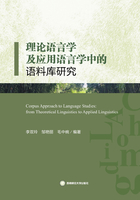
7. Conclusion
This paper has extended the investigation of the association between phraseology and disciplinary epistemology by drawing on an alternative candidate for describing the phraseological behaviour of language in use. While this exploratory study does not allow us to make general statements about the disciplinary cultures of the disciplines examined, it has amassed sufficient evidence to show that semantic sequences are useful for depicting and researching disciplinary cultures. It has been further argued that research on semantic sequences has significant pedagogical applications in the teaching and learning of academic writing in EAP/EFL contexts, noting that semantic sequences identified in disciplinary discourses familiarize language learners with“what is often said” and “how it is said”in their specific field and that the practice of semantic sequence analysis helps to raise language learners' awareness of phraseology in academic writing. The usefulness of semantic sequences in describing disciplinarity and the pedagogical applications discussed above would suffice to indicate that larger scale studies which investigate the association between phraseology and disciplinary epistemology within the analytical framework of semantic sequences are both desirable and valuable.